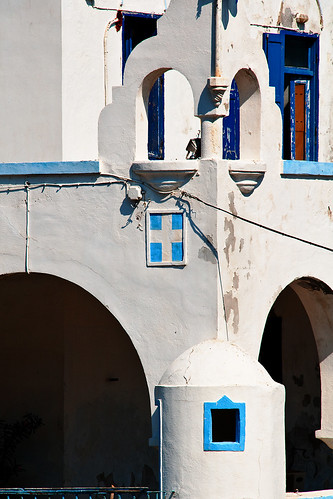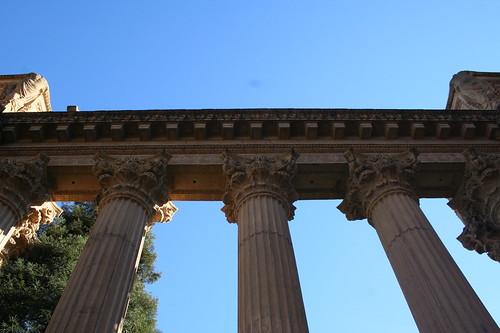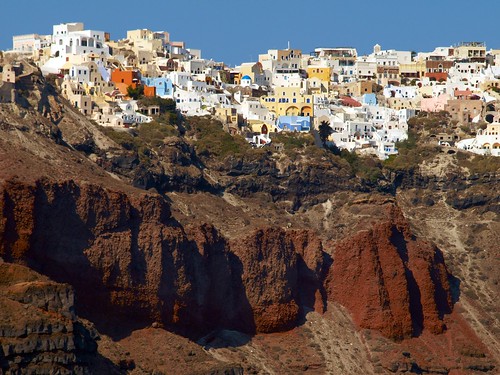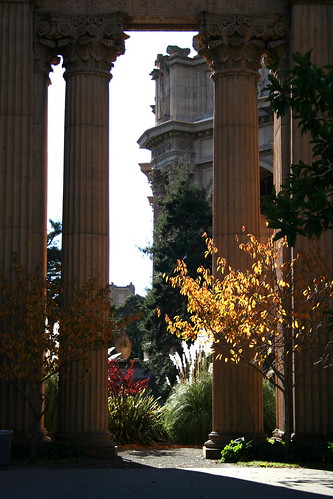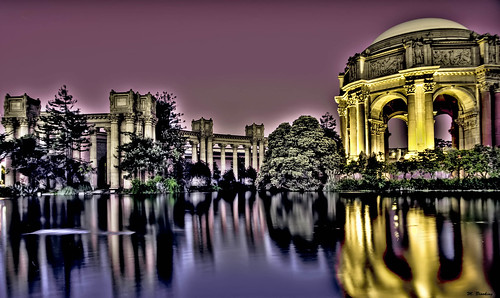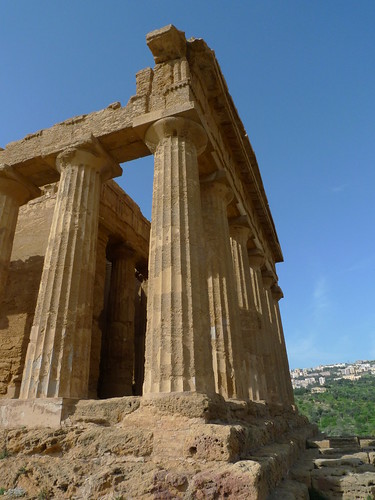
Life-Like Qualities of Plasma
Bohm, a leading expert in twentieth century plasma physics, observed in amazement that once electrons were in plasma, they stopped behaving like individuals and started behaving as if they were a part of a larger and interconnected whole. Although the individual movements of each electron appeared to be random, vast numbers of electrons were able to produce collective effects that were surprisingly well organized and appeared to behave like a life form. The plasma constantly regenerated itself and enclosed impurities in a wall in the same way that a biological organism, like the unicellular amoeba, might encase a foreign substance in a cyst. So amazed was Bohm by these life-like qualities that he later remarked that he frequently had the impression that the electron sea was "alive" and that plasma possessed some of the traits of living things. The debate on the existence of plasma-based life forms has been going on for more than 20 years ever since some models showed that plasma can mimic the functions of a primitive cell.
Plasma cosmologist, Donald Scott, notes that "...a [plasma] double layer can act much like a membrane that divides a biological cell". A model of plasma double layers (a structure commonly found in complex plasmas) has been used to investigate ion transport across biological cell membranes by researchers (See American Journal of Physics, May 2000, Volume 68, Issue 5, pp. 450-455). Researchers noted that "Concepts like charge neutrality, Debye length, and double layer [used in plasma physics] are very useful to explain the electrical properties of a cellular membrane". Plasma physicist Hannes Alfvén also noted the association of double layers with cellular structure, as had Irving Langmuir before him, who coined the term "plasma" after its resemblance to living blood cells.
David Brin's Sundiver also speculated on plasma life forms. This science fiction proposed a form of life existing within the plasma atmosphere of a star using complex self-sustaining magnetic fields. Similar types of plasmoid life have been proposed to exist in other places, such as planetary ionospheres or interstellar space. Gregory Benford had a form of plasma-based life exist in the accretion disk of a primordial black hole in his novel Eater.
Plasma Life Forms in Space
An international scientific team has discovered that under the right conditions, particles of inorganic dust can become organized into helical structures which can interact with each other in ways that are usually associated with organic life. Using a computer model of molecular dynamics, V N Tsytovich and his colleagues of the Russian Academy of Science showed that particles in plasma can undergo self-organization as electric charges become separated and the plasma becomes polarized in their paper entitled From Plasma Crystals and Helical Structures towards Inorganic Living Matter, published in the New Journal of Physics in August 2007.
Past studies, subject to Earth's gravity, have shown that if enough particles are injected into a low-temperature plasma, they will spontaneously organize into crystal-like structures or "plasma crystals". Tsytovich's computer simulations suggest that in the gravity-free environment of space, the plasma particles will bead together to form string-like filaments which will then twist into helical strands resembling DNA that are electrically charged and are attracted to each other.
The helical structures undergo changes that are normally associated with biological molecules, such as DNA and proteins, say the researchers. They can, for instance, divide to form copies of the original structure; which then interact to induce changes in their neighbors that evolve into other new structures. The less stable structures break down over time leaving behind only the structures that are most adapted to the environment. "These complex, self-organized plasma structures exhibit all the necessary properties to qualify them as candidates for inorganic living matter", says Tsytovich, "they are autonomous, they reproduce and they evolve".
He adds that the ionized conditions needed to form these helical structures are common in outer space. If that is so, then it will mean that plasma life forms are the most common life form in the universe, given that plasma makes up more than 99% of our visible universe which is almost everywhere ionized. This is in stark contrast to carbon-based life forms, which according to the Rare Earth hypothesis proposed by Peter Ward and Donald Brownlee, would be rare in the universe due to a number of factors - including the need for an acceptable range of temperatures to survive. Complex carbon based life may be as rare as solid rocky bodies like the Earth in the universe.
Plasma, on the other hand, is associated with high temperatures. Plasma life forms would be much more adapted to environments which would be considered hostile to carbon-based life forms. It is possible that plasma life forms were already present in the gas and materials that formed the Earth 4.6 billion years ago. Carbon-based biomolecular life forms only appeared 1 billion years later. Tsytovich and other scientists (including Lozneanu and Sanduloviciu, discussed below) have proposed that plasma life forms, in fact, spurred development of organic carbon-based life on Earth.
In this connection, Tsytovich pointed out that plasma life forms can develop under more down to Earth conditions such as at the point of a lightning strike. The researchers hint that perhaps a plasma form of life emerged on the primordial Earth which had a highly ionized atmosphere, which then acted as the template for the more familiar organic molecules we know today. A plasma bubble could form at the end of a lightning strike and act as a mould for chemicals to conform with to form a primitive biological cell.
Plasma Life Forms in the Laboratory
This is not the first time in recent years that plasma life forms have been studied. In 2003 physicists; Erzilia Lozneanu and Mircea Sanduloviciu of Cuza University, Romania, described in their research paper Minimal Cell System created in Laboratory by Self-Organization (published in Chaos, Solitons & Fractals, volume 18, page 335), how they created plasma spheres in the laboratory that can grow, replicate and communicate - fulfilling most of the traditional requirements for biological cells. They are convinced that these plasma spheres offer a radically new explanation of how life began and proposed that they were precursors to biological evolution.
The researchers studied environmental conditions similar to those that existed on the Earth before life began, when the planet was enveloped in electric storms that caused ionized gases to form in the atmosphere. They inserted two electrodes into a chamber containing a low-temperature polarized plasma of argon - a gas in which some of the atoms have been split into negatively-charged electrons and positively-charged ions. They applied a high voltage to the electrodes, producing an arc of energy that bolted across the gap between them, like a miniature lightning strike. Sanduloviciu says this electric spark caused a high concentration of ions and electrons to accumulate at the positively charged electrode, which spontaneously formed spheres. The evolved sphere appears as a stable, self-confined, layered, luminous and nearly spherical body - much like the "orbs" described in the paranormal literature and discussed below. The amount of energy in the initial spark governed their size and lifespan. Sanduloviciu grew spheres from a few micrometers to up to three centimeters in diameter.
Lozneanu and Sanduloviciu describe a rhythmic "inhalation" of the nucleus which mimics the breathing process of living systems and results in pulsations. The spheres could replicate by splitting into two. Under the right conditions they grew bigger, taking up neutral argon atoms and splitting them into ions and electrons to replenish their boundary layers. Finally, they could communicate information by emitting electromagnetic energy, making the atoms within other spheres vibrate at a particular frequency. "This is no different from the vibrating diaphragm in a telephone which enables information to be communicated from one point to another," says David Cohen, reporting in the journal New Scientist. This would give these plasma spheres an ability which would be described as telepathic if we did not know how electromagnetic waves worked. Sanduloviciu insists that although the spheres require high temperature to form, they can survive at lower temperatures. "That would be the sort of environment in which normal biochemical interactions occur".
According to Sanduloviciu, these plasma spheres were the first cells on Earth, arising within electric storms, and he believes that the emergence of such spheres is a prerequisite for the evolution of biological cells. He says that the cell-like spheres could be at the origin of other forms of life we have not yet considered. "There could be life out there, but not as we know it" he says. Indeed, according to plasma metaphysics, the microscopic orbs (described in the paranormal literature) and the macroscopic subtle bodies (described in the metaphysical literature) are plasma-based life forms.
The Physical-Etheric Nucleus in Metaphysical Literature
Each subtle body has a nucleus - which metaphysicists Charles Leadbeater and Annie Besant had described as a "permanent particle" almost a century ago. Leadbeater calls the nucleus of the higher etheric double a "physical-etheric atom". Information about the relevant subtle body is stored in this particle (its composition, frequency, structure and associative memories). In this way the experiences that the subtle body has gone through in this universe are stored or are linked to this nucleus - according to Leadbeater and Besant. The particle is analogous to DNA in the biomolecular body. DNA is referred to as a "bioparticle" in the medical literature and it stores or links vast amounts of information about a particular life-form. Hindu metaphysics describes these particles or nuclei as "bindus" and Tibetan yoga "drops".
The physical-etheric nucleus is transferred to higher energy bodies when the subtle body dies - serving the same purposes as a "black box" flight recorder in an airplane in preserving information about a particular life's experiences. This nucleus is also responsible for the life review in a near-death experience. According to Besant, the permanent particles are used to preserve within themselves as "powers of vibrations" (i.e. different frequencies and waveforms) the results of all experiences through which they have passed. By the end of one's life in the physical body, the permanent particle (or physical-etheric nucleus) would have stored up "innumerable powers of vibration" (i.e. a set of waveforms of different frequencies). The particle usually resides (probably in an electromagnetic well) around the heart region of the physical-biomolecular and lower physical-etheric body.
Plasma Orbs in Paranormal Literature
In 2004 (as reported in the Physical News Update by Phil Schewe and Ben Stein) an experiment was conducted where particles in a plasma crystal arranged themselves into neat concentric shells (or rings - from a two-dimensional perspective), to a total ball diameter of several millimeters. These orderly Coulomb balls, consisting of aligned, concentric shells of dust particles, survived for long periods. This structure was described as an "onion-like architecture". (Dark matter halos around galaxies also have similar structures.)
Paranormal analyst, Allan Danelek (in his book The Case for Ghosts) says, "One could think of orbs as 'tiny ghosts' moving around a room, their essence being contained within a tiny sphere of pure energy, like air inside a bubble." This description matches the description of life-like pulsating plasma spheres generated in the laboratory by Lozneanu and Sanduloviciu. Furthermore the pulsating plasma spheres would also give readings of a fluctuating electromagnetic field. Leading ghost hunter, Joshua Warren, says "Nine times out of ten, if a mysterious field is constant and stable, it's artificial; if it fluctuates erratically, it's paranormal."
According to the paranormal literature "orbs" are light anomalies that appear on photographs and video as spherical balls of light but as flashes of light to the naked eye because of their rapid speed of motion. They exhibit intentional behavior - suggesting some consciousness or awareness of the environment.
Orbs often travel in groups or clusters i.e. they exhibit swarm behavior - also a characteristic of particles in plasma - a characteristic observed by Bohm (see above). Orbs also can dart back and forth rapidly like amoebic life-forms in a Petri dish. The balls can be transparent, translucent or in a bright solid form. These are signature features of magnetic plasma which has the natural property of being able to change its degree of opacity when internal frequencies change. Magnetic plasma would also allow orbs to change their output of light or luminosity.
Looking at these balls in close-up reveals that they possess an onion-like layered structure i.e. they have concentric shells - a signature feature of plasma crystals. Danelek says, "...'true orbs' do not reflect light the same way a dust particle or flying insect does, but are instead generally more opaque and, in some cases, even appear to have rings within them." Experienced ghost hunter Joshua Warren (in his excellent book How to Hunt Ghosts) says, "Often, orbs appear to have a nucleus, just like a cell. The nucleus might be surrounded by 'bands' - concentric circles emerging from it. In fact, it might appear like an onion that's been chopped in half." All these characteristics are identical to plasma crystals generated in the laboratory.
Some believe that an orb is a human soul or the life force of those that once inhabited a physical-dense body. Psychics claim to be able to communicate with them on a regular basis, and ghost hunters encounter them quite frequently in photographs and video. It is thought that they are conscious spirits that have stayed behind because they feel bound to their previous life or previous location for whatever reason - a typical characteristic of "Earth-bound" physical-etheric ghosts. According to plasma metaphysics, (genuine) orbs are plasma life forms and are identical to the physical-etheric nuclei observed by metaphysicists Charles Leadbeater and Annie Besant that are released from dying persons.
According to plasma metaphysics, (genuine) orbs are the physical-etheric nuclei that are released from dying persons. Most of these nuclei exit-out of our universe through vortexes after the death of the higher physical-etheric body and are absorbed into the next higher energy body in the next universe - most frequently what metaphysicists describe as the "astral body" and the "astral plane or sphere". However, some stay behind because of unfinished business or some psychological attachment to the physical life that just ended. These are the (genuine) orbs that we see in photographs and videos. This conclusion is consistent with the theory of some paranormal investigators that spirits may find it easier to travel from one dimension to another in the form of orbs which can move more easily (than full-blown subtle bodies) through vortexes to another universe.
A number may also get reabsorbed into the dark plasma halos that envelope human embryos to start a new life in this physical-dense universe (i.e. they reincarnate in a physical-dense body). They grow with the embryo and facilitate the morphogenesis of the physical-dense and lower physical-etheric body. As they grow they absorb more energy and particles from the ionized (physical-etheric) environment and eventually become full-blown ovoids with "subtle bodies" inside. In this particular case, the subtle body will be the (higher) physical-etheric body or the "physical-double".
During death, the ovoid contracts into the physical-etheric nucleus (by dispersing its contents) and is released from the dying physical body after traveling through a meridian (which is associated with the lower physical-etheric body) and exits from the head to emerge as an orb with a bright nucleus. Details of this process can be found in the author's book Our Invisible Bodies.
Interactions with Ordinary Matter
Orbs resemble plasma spheres in many ways. However, while plasma spheres generated in the laboratory are composed of standard particles (i.e. the particles described in the physicists' Standard Model currently), orbs are composed of super (i.e. supersymmetric) collisionless dark matter particles. This allows orbs to pass through objects and walls (just like ghosts).
Dark matter in the physical-etheric universe can only interact with ordinary matter if their energy levels temporarily fall and ordinary matter condenses around them. Warren believes that since ghosts have an electrostatic field, it makes sense that particles from the atmosphere would be trapped in the field. This would form a tiny clump of particles that betrays the presence of the ghost. He says that, based on readings on electromagnetic meters during paranormal investigations, paranormal orbs carry a charge of static electricity. Dr Michael Persinger, a lab-based parapsychologist, and his colleagues demonstrated a link between strong or varying electromagnetic fields and orb activity. Orbs are also said to travel along Birkeland currents (i.e. ley or energy lines). This is another characteristic of their electromagnetic nature - which suggests that they are composed of magnetic plasma which is a good generator of electromagnetic fields and a good radiator of electromagnetic waves.
According to Warren, orbs are most active in the deep infrared region. In 1983, physicist Pierre Sikivie proposed a technique to detect invisible dark matter particles called "axions". His technique called for a high "Q" microwave cavity, permeated by a strong static magnetic field. In the magnetic field, axions were expected to convert into microwave photons. Microwaves are in between the infrared region and radio waves in the electromagnetic spectrum. If ghosts are composed of dark matter particles, it can be hypothesized that they too would generate microwave and infrared radiation in the presence of a strong static magnetic field and even radio waves which can be received by our radios.
Subtle Bioplasma Bodies in the Metaphysical Literature
According to plasma metaphysics (see Jay Alfred, Our Invisible Bodies, 2006) the subtle bodies described in the general metaphysical literature (particularly the yoga and New
Age literature) are bioplasma bodies.
The Subtle Body is a Bioplasma Body
Subtle bodies have signature features associated with plasma. These include:
• Networks of filamentary currents (known as "nadis" or "meridians" in the metaphysical literature).
• Helical currents, aligned with the spine, which resemble helical pinches and "snakes" often found in plasma.
• Plasma vortexes (know as "chakras" in the metaphysical literature) caused by the helical movement of particles entering the bioplasma body.
• Jets or beams of collimated light that issue out from these vortexes which evidence a plasma discharge (similar to what issues out of a plasma gun).
• A magnetized plasma ovoid which surrounds and shields subtle bodies from the environment (just as the Earth is protected by the magnetosphere - a sphere composed of collisionless magnetized plasma).
• A plasma (Langmuir) sheath (know as an "auric sheath" or "auric shell" in the metaphysical literature) which encloses the ovoid.
• The ability of subtle bodies to pass through each other suggesting that they are composed of collisionless plasma.
• The ability of subtle bodies to emit light (not simply reflect them) that generate colorful halos.
• The ability of subtle bodies to change their degree of opacity - becoming transparent or translucent.
• The electrical feel of subtle bodies.
• The responsiveness of subtle bodies to electromagnetic fields.
All these features were described and documented more than 2,000 years ago, mainly in the Hindu and Chinese acupuncture literature; but also alluded to in the Buddhist and Christian scriptures and literature - long before the age of electricity and magnetism which was only sparked-off in the eighteenth century. Furthermore, the list above is not exhaustive - it is only meant to be a sample of the features of subtle bodies which unmistakably points to plasma. Details of the above observations can be found in the previous articles and books by this author.
The Spark of Life
According to plasma metaphysics, subtle bodies live in a magnetic plasma sphere (an ordinarily invisible counterpart Earth) - an environment similar to the early (physical-dense) Earth.
During in vitro fertilization the human embryo is given an electrical jolt to spark-off cell division. The purpose of this routine electrical intervention is not known. All is known is that cell division is unlikely to occur in the absence of this electrical intervention. According to plasma metaphysics (Our Invisible Bodies, 2006), this electrical spark is necessary to generate a plasma bubble which acts as a catalyst during embryogenesis. Unlike a biomolecular environment, a plasma environment allows long-range correlations, without which a 3 dimensional structure could not be projected from a 1 dimensional gene. An embryo within a human body is protected by the plasma bubble (i.e. the physical-etheric double) of the mother and inherits a bubble within this environment. (In this process, it acquires what the Qigong literature refers to as "prenatal qi".)
Accelerated Morphogenesis of the Bioplasma Double
An embryonic bioplasma body is projected into the plasma bubble based on information in the physical-etheric double of the DNA. In fact, subtle radiation containing holographic information was observed by researchers at the Russian Academy of Science as a surprise effect during experiments when they were measuring the vibrational modes of DNA in solution using a sophisticated laser photon correlation spectrometer. According to Sue Benford, their research suggests the existence of a subtle radiation linked to physical DNA that supports the hypothesis of an intact energy field containing relevant 'organismal information'. The Russian experiments produced different measurements when DNA was present and removed from the scattering chamber. These results were contrary to the expectations of the experimenters. After duplicating the initial experiment many times with re-calibrated equipment, the scientists were forced to accept that some new field structure existed. This embryonic bioplasma body within the plasma bubble (which contains helical currents) grows together with the physical-biomolecular body but at an accelerated rate, being aided by the long range correlations present in the plasma but absent in the biochemical field.
Morphogenesis of the Physical Biomolecular Body
There is mutual affinity between the bioplasma and physical-biomolecular bodies. In fact, the term "plasma" is derived from a Greek word meaning "to mould" and was coined by Langmuir based on his observations of the manner in which the positive column of a glow discharge tended to mould itself to the containing tube. Similarly, the bioplasma fetus wraps around the physical-biomolecular embryo while undergoing an accelerated morphogenesis (relative to the physical-biomolecular embryo).
The physical-biomolecular body therefore is cued by the bioplasma body which acts an electronic matrix and a time-resolved hologram that guides its development. The bioplasma body, in turn, acts as a mould or a template body for the development of the single-celled physical-biomolecular embryo to the adult body. This has frequently been pointed out by metaphysicists, including Leadbeater, Besant and Barbara Brennan.
Complex biological evolution could not have taken place on Earth without the aid of the templates provided by subtle bioplasma bodies which interacted with biochemical fields via weak electromagnetic fields. These bioplasma bodies are composed of high energy particles and inhabit (magnetized) plasmaspheres which share the same space and gravitational field as the physical-dense Earth. The lowest energy plasmasphere has been described by metaphysicists as the physical-etheric Earth.
Conclusion
As proposed by Tsytovich, Lozneanu and Sanduloviciu, the physical-dense plasma cell was a precursor to the biological cell in the early (physical-dense) Earth - acting as a template or mould for the biological cell to form in 3 dimensional space. However, the lightning strikes that generated the physical-dense plasma cells also generated physical-etheric plasma cells in the physical-etheric Earth. As the conditions on Earth changed and the environment became progressively less ionized, the physical-dense plasma cell was less frequently generated. However, the physical-etheric plasma cell (existing in the physical-etheric Earth) remained as it participated in the development of the biological body to which it was attached to and subsequently was transmitted together with the biological cells in various forms of reproduction - both asexual and sexual.
Copyright © Jay Alfred 2007
Jay Alfred has been researching on plasma life forms since 2001. He is the author of three books on a new field called "plasma metaphysics". The books include Our Invisible Bodies, Brains and Realities and Between the Moon and Earth which are available on Amazon online bookstores. Plasma metaphysics is the application of plasma and dark matter physics to the study of plasma life forms and their corresponding habitats. This includes the study of bioplasma bodies which co-evolved with carbon-based bodies on this planet.

